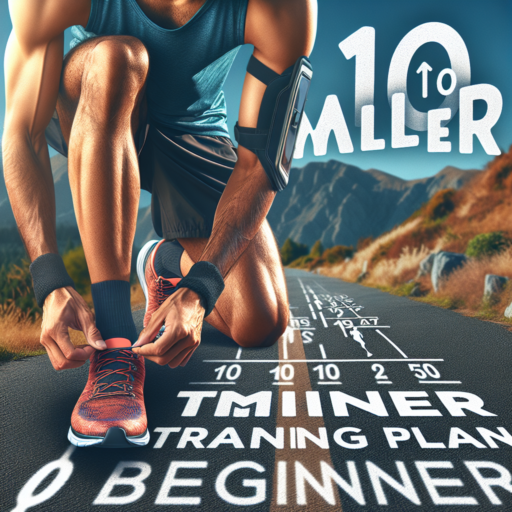Introduction to the Couch to 10K Plan: Conquer 10K in 8 Weeks
Embarking on the journey from the Couch to 10K might seem like a leap, but with a structured plan, it’s an achievable goal for beginners and seasoned runners alike. The Couch to 10K plan is designed to gradually build your running endurance over 8 weeks, leading you to conquer a 10K run with confidence and strength. This beginner-friendly regimen is not just about hitting the pavement; it’s a comprehensive approach to boosting your physical and mental fitness.
The Couch to 10K plan breaks down the intimidating task of running 10 kilometers into manageable increments. Initially, the focus is on alternating between walking and running, gently increasing your stamina. Emphasis is placed on creating sustainable habits, ensuring that running becomes a part of your lifestyle rather than a fleeting challenge. This approach minimizes the risk of injuries and promotes continuous progress, keeping you motivated throughout the 8-week period.
Following this plan, you’ll discover more than just the physical benefits of running. The transformative power of achieving a 10K stretches beyond the physical, instilling a sense of achievement and mental resilience. You’ll learn to set realistic goals, listen to your body, and push your limits responsibly. Embark on this journey to transcend the ordinary and unlock a healthier, more vibrant version of yourself.
Week 1 & 2: Kickstarting Your Journey From Couch to 10K
Embarking on a 10K run journey starting from couch level is an exhilarating challenge that requires a strategic and motivated approach. The initial weeks are crucial for building a solid base and integrating running into your daily routine. During the first and second week, your primary goal is to gently wake your body up to the demands of regular running while keeping motivation high and injuries at bay.
Setting Realistic Goals and Creating a Flexible Plan
In the initial phase, it’s critical to set achievable goals. Begin with short, manageable runs or walks, gradually increasing your distance. A mix of walking and running can help ease you into the regimen without overwhelming your body. Remember, consistency beats intensity at this stage. Your plan should be flexible enough to adjust to how your body responds to the increased activity.
Listening to Your Body
Listening to your body is key to avoiding injuries. It’s normal to experience some discomfort as your body adapts to running, but any sharp pain is a red flag. Incorporating rest days into your schedule is essential for recovery and progress. During these weeks, focus on understanding the difference between pushing your limits and overstepping them. Utilize dynamic stretching before runs to prepare your body and static stretching afterward to aid in recovery. Hydration and proper nutrition also play vital roles in supporting your body through this adjustment period.
By focusing on these foundational aspects during your first two weeks, you set the stage for a successful and sustainable journey to running a 10K. This initial period is about building confidence, establishing a routine, and learning to enjoy the process of becoming a runner. Keep the momentum going, and remember, every runner starts with a single step.
Week 3 & 4: Building Stamina and Endurance for Your First 5K
Entering weeks 3 and 4 of your training for your first 5K is an exhilarating step forward. This phase is critical, as it’s the time to focus on enhancing your stamina and endurance. Stamina and endurance are the backbone of any successful long-distance runner, allowing you to maintain a steady pace over the entire 5K distance without tiring out too quickly.
During these weeks, your workouts should be strategically designed to gradually increase your running time and decrease your walking breaks. This can be achieved through a mix of steady-state runs and interval training. Steady-state runs will help you find a comfortable pace that you can maintain over a longer period, helping to build your endurance. On the other hand, interval training, which alternates between periods of high and low intensity, improves your cardiovascular fitness, allowing your body to recover more quickly and efficiently.
Implementing Effective Exercise Strategies
- Increase your running intervals by 1 to 2 minutes, keeping the walking intervals constant.
- Incorporate at least one long run per week, gradually increasing the distance by 10% to safely build endurance.
- Utilize cross-training activities, such as cycling or swimming, on non-running days to improve overall fitness without extra impact on your joints.
Building stamina and endurance doesn’t solely rely on physical training; adequate rest and nutrition are also key components of your success. Ensure you’re allowing your body enough time to recover between sessions and fueling it with the right nutrients to support your running journey. Embracing this holistic approach during weeks 3 and 4 will set a solid foundation for the weeks to come, bringing you closer to achieving your goal of completing your first 5K.
Week 5 & 6: Increasing Distance and Speed – Halfway to 10K
As you reach Weeks 5 and 6 in your journey to run a 10K, this stage is all about pushing your limits gently and effectively. It’s a crucial point where you’ll focus on both increasing distance and speed, a combination that will prepare your body for the longer runs ahead. But how do you do this without overextending yourself or risking injury? The key lies in gradual enhancement and consistent pacing.
During these weeks, the emphasis should be on increasing your running intervals incrementally. You might have already been comfortable running shorter distances, but the goal now is to extend both the time and distance of each run. This doesn’t mean making huge leaps; rather, it’s about adding small chunks of running time or distance to each session. For instance, if you’re consistently running 3 km, push it to 3.5 km or by an additional 5-10 minutes of running. Doing this consistently will not only build your endurance but also instill the confidence needed for longer distances.
To effectively increase speed, incorporating interval training or tempo runs can be incredibly beneficial. These sessions focus on alternating between high-intensity bursts and recovery periods or maintaining a challenging but steady pace, respectively. It’s not about sprinting as fast as you can immediately but gradually increasing your pace during these runs. An example could be running at a moderate pace for 5 minutes, then increasing to a faster pace for 1-2 minutes, and repeating this pattern throughout your run. Such practices during Weeks 5 and 6 will not only enhance your speed but also improve your overall running efficiency.
No se han encontrado productos.
Week 7: Fine-Tuning Your Training and Preparing for Race Day
Entering Week 7 in your race preparation means you’re nearing the final stretch, a crucial phase for fine-tuning your training and ensuring you’re fully prepared for the upcoming race day. This period is less about building endurance from scratch and more about optimizing your performance, maintaining your fitness level, and managing your mental readiness. Let’s dive into what fine-tuning your training entails and how you can best prepare for the big day.
Optimizing Your Training Intensity
At this juncture, it’s critical to adjust your training intensity to prevent overtraining while still maintaining peak fitness. Incorporating interval training and tapering are key strategies. Interval training can help maintain your cardiovascular fitness without putting excessive strain on your body, while tapering, the gradual reduction of training volume, ensures your body recovers and is at its peak performance potential on race day. Balancing these elements will keep you sharp, rested, and ready.
Test Running Your Race Gear
An often overlooked aspect of race preparation is the importance of getting comfortable with your race day gear. This includes everything from your running shoes and outfit to any hydration packs or energy gels you plan to use. A trial run in your race gear can help ensure everything fits comfortably, functions properly, and doesn’t lead to unexpected surprises on the day. Additionally, this is the time to finalize any strategies for hydration and nutrition, ensuring you have a clear plan for fueling during the race.
Mental preparation is equally important during this final week. Visualizing the race, going over your strategy, and setting realistic goals can significantly impact your confidence and performance. Remember, this week is about making minor adjustments, refining what works, and ensuring you step up to the starting line feeling prepared, confident, and ready to achieve your personal best. Keep your focus on staying relaxed, sticking to your plan, and looking forward to the culmination of your hard work on race day.
Week 8: The Final Stretch – Tips and Strategies for the 10K Finish Line
As you approach Week 8 in your 10K training plan, the anticipation for the final stretch grows. It’s crucial at this stage to refine your strategy and iron out any kinks in your preparation. This is the week where your previous efforts culminate, setting the stage for a strong finish. Emphasizing endurance, pace, and mental readiness can make a significant difference in your performance.
Optimize Your Endurance Strategy
To ensure you’re in peak condition for the 10K finish line, focus on maintaining a consistent pace that challenges you without leading to early fatigue. Incorporate long, slow distance runs (LSD) into your Week 8 training, as these will greatly enhance your stamina. Balancing intensity in your workouts is key; avoid overtraining by allowing adequate recovery time between sessions. This blend of endurance and rest is crucial for reaching the finish line feeling strong.
Refine Your Pacing
Finding and maintaining your optimal pace is paramount in the final week of training. Use your previous weeks’ experiences to identify a comfortable yet challenging speed. It’s beneficial to simulate race conditions by practicing at the same time of day as your planned race, adjusting for weather and terrain when possible. Remember, a pace that feels manageable at the start can become taxing, so it’s important to start conservatively and gradually increase your speed.
Incorporating these tips and strategies during Week 8 will help solidify your preparation for the 10K race. By focusing on endurance, pacing, and allowing for adequate recovery, you set the stage for a successful and satisfying finish. Keep in mind that every runner’s journey is unique, so personalize your approach based on your individual experiences and progress. Engage fully in this final stretch, and you’ll cross the finish line with confidence.
Nutrition and Diet: Fueling Your Couch to 10K Training
Starting your journey from the couch to a 10K run is an incredible goal, but it requires more than just physical training. Your nutrition and diet play a pivotal role in fueling your body for the endurance and strength needed for such an endeavor. Understanding the right balance of nutrients can make a significant difference in your performance and recovery.
Key Nutrients for Runners
Runners need a well-rounded diet packed with key nutrients to sustain energy, speed up recovery, and prevent injuries. Carbohydrates are your body’s main fuel source, especially for long-distance runs, so incorporating whole grains, fruits, and vegetables into your meals is crucial. Proteins are essential for muscle repair and recovery, so lean meats, fish, beans, and legumes should be part of your dietary plan. Don’t forget about fats; healthy fats like those found in avocados, nuts, and seeds are vital for long-lasting energy. Additionally, hydration plays a non-negotiable role in your training performance and overall health. Drinking plenty of water before, during, and after your runs ensures optimal body function.
Meal Timing and Frequency
When you eat is almost as important as what you eat. To optimize performance, aim to eat a balanced meal containing carbs, proteins, and fats 2 to 3 hours before your run. This allows your body to digest the food and use it as energy. Post-run, it’s essential to refuel with a mix of carbohydrates and proteins within 30 minutes to repair muscles and replenish energy stores. For those in rigorous training, incorporating snack-sized meals every 3 to 4 hours throughout the day can maintain energy levels and prevent hunger pangs.
Adapting your nutrition and diet as you progress from the couch to 10K is a gradual process that demands attention and adjustment. By focusing on nutrient-rich foods, staying hydrated, and timing your meals correctly, you’ll support your body through the rigors of training and set the stage for a successful and satisfying 10K run.
Injury Prevention and Recovery Tips During Your 8-Week Plan
Embarking on an 8-week plan is an ambitious goal, whether you’re aiming to build muscle, increase endurance, or achieve a personal fitness milestone. However, without the right precautions, you’re risking injuries that can derail your progress. Understanding the key strategies for injury prevention and recovery is crucial to ensure you not only stick to your plan but also emerge stronger and healthier.
Importance of Warm-Up and Cool-Down Exercises
Warm-up and cool-down exercises are the cornerstones of injury prevention. Incorporating at least 10 minutes of dynamic stretching and muscle activation exercises before your workout prepares your body for the stress ahead. Similarly, winding down with gentle stretching and flexibility exercises helps in minimizing muscle soreness and promoting recovery. This routine significantly reduces the risk of strains and sprains during your 8-week journey.
Adopt a Progressive Overload Approach
While it’s tempting to push your limits from the get-go, a progressive overload approach is key to achieving sustainable progress without injuries. Increasing your workout intensity or duration by no more than 10% each week allows your body to adapt gradually. This not only helps in building endurance and strength effectively but also minimizes the risk of overuse injuries, critical for maintaining steady progress throughout your 8-week plan.
Essential Gear and Tech for a Successful Couch to 10K Experience
Embarking on a Couch to 10K journey is an exciting challenge that requires not just determination, but also the right gear and technology to ensure a successful experience. Whether you’re a seasoned runner looking to upgrade your equipment or a beginner eager to set off on the right foot, understanding the basics of what you’ll need is crucial.
Key Running Gear
First and foremost, a good pair of running shoes is non-negotiable. Your shoes should offer adequate support and suit your foot’s arch type to prevent injuries. Additionally, comfortable, moisture-wicking clothing can greatly enhance your running experience by keeping you dry and avoiding chafing. Consider investing in a quality pair of running tights or shorts, along with a few breathable shirts. Don’t forget about a supportive sports bra for women, which is as crucial as the shoes.
Must-Have Tech for Tracking Progress
In today’s digital age, leveraging technology can significantly boost your Couch to 10K journey. A reliable fitness tracker or smartwatch is indispensable for monitoring your pace, distance, and heart rate. These devices can help you stay on track with your training program by offering real-time feedback and encouragement. Moreover, using a running app specifically designed for Couch to 10K programs can provide you with structured workout plans, coaching tips, and motivational tools. Combining these tech elements can create a holistic view of your progress and help in making necessary adjustments to your training regimen.
Selecting the right gear and tech is a fundamental step in preparing for a Couch to 10K challenge. Equipping yourself with the essential items mentioned will not only enhance your training but also help in preventing injuries, making your transition from couch to 10K both enjoyable and successful. As you embark on this journey, remember that the right preparation can make all the difference in reaching your running goals.
Motivation and Mindset: Staying Committed to the Couch to 10K Plan
Embarking on a Couch to 10K journey is an exciting, yet challenging commitment. The key to success lies not just in the physical training but significantly in nurturing a balanced motivation and mindset. A resilient mindset can transform obstacles into stepping stones, making the path from the couch to 10K not just possible, but enjoyable.
One critical aspect of staying motivated is setting realistic and measurable goals. Break down the larger objective of a 10K run into smaller, more manageable milestones. Celebrating these smaller victories not only fuels motivation but also reinforces the belief in one’s ability to achieve greater targets. Furthermore, integrating variety in your training plan can keep the excitement alive and prevent the routine from becoming monotonous, thus preserving your enthusiasm and commitment to the goal.
An often overlooked yet crucial factor in maintaining commitment is the support system. Joining a community, whether online or in person, that shares the same goal of running a 10K can be incredibly motivating. It creates a sense of accountability and provides an avenue for sharing tips, challenges, and encouragement. Whether it’s through social media groups, local running clubs, or with a running buddy, fostering these connections can significantly impact your motivation and mindset, keeping you steadfast on your journey from couch to 10K.




